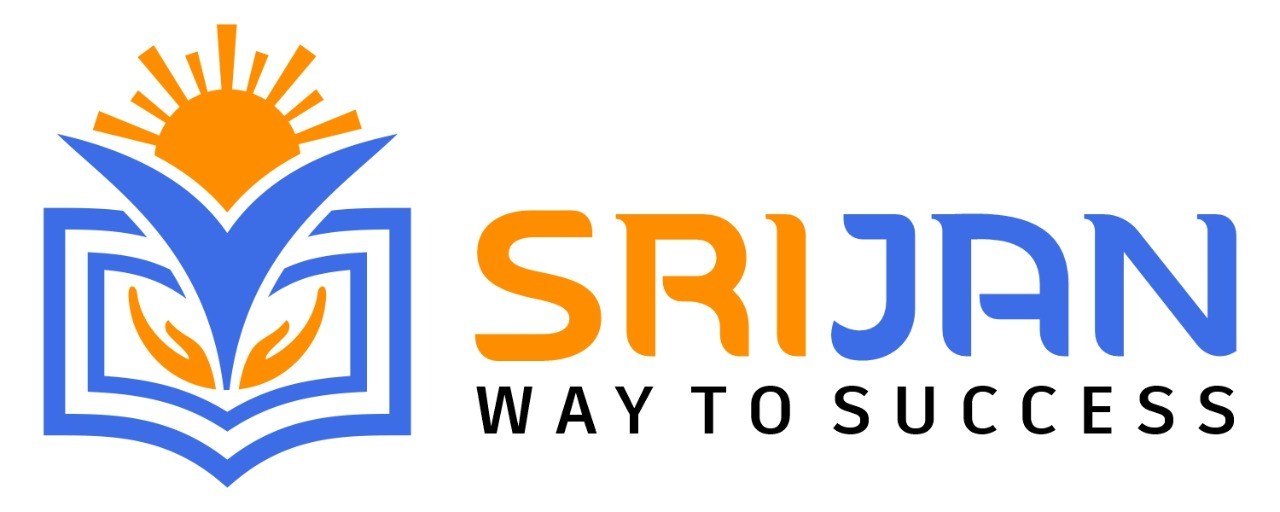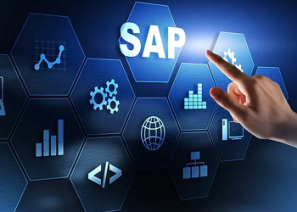SAP GRC: Enhancing Corporate Governance and Accountability
SAP GRC Training || SAP GRC certification Training || SAP GRC Online training || SAP GRC self-paced training || SAP GRC Instructor-Led training
Key Features of Training:
- 30 Hrs Instructor-led Training
- Mock Interview Session
- Project Work & Exercises
- Flexible Schedule
- 24 x 7 Lifetime Support & Access
- Certification and Job Assistance
SAP GRC(Governance, Risk, and Compliance):
SAP GRC (Governance, Risk, and Compliance) is a software solution offered by SAP that helps organizations manage their governance, risk, and compliance processes in an integrated and streamlined manner. It provides a range of modules and functionalities that enable businesses to effectively manage risk, ensure compliance with legal and regulatory requirements, and establish strong governance practices. The SAP GRC solution includes modules for access control, process control, risk management, and fraud management, among others. These modules are designed to work together to provide a comprehensive and integrated approach to managing governance, risk, and compliance.
Prerequisites: Who can attend SAP GRC Training?
- Basic knowledge of SAP ERP
- Understanding of business processes
- Familiarity with compliance regulations
- Knowledge of risk management
- Familiarity with IT security
- Good Communication Skills
Responsibilities of SAP GRC Consultant:
- Understanding business processes
- Assessing risk
- Designing GRC strategies
- Implementing GRC solutions
- Integrating with other systems
Course Benefits
- Job opportunities
- Promotion opportunities (Salary Hike)
- Increased productivity
- Improved decision-making
- Gain in-demand skills
What is the future of SAP GRC Consultant?
- Increased demand
- Focus on cloud-based solutions
- Emphasis on cybersecurity
- Integration with other SAP modules
- Need for updated skills
The fee for SAP GRC(Governance, Risk, and Compliance) training can vary depending on several factors such as the location, duration of the course, training format, and level of expertise. SAP offers various training options for GRC, including instructor-led courses, e-learning courses, and virtual live classrooms.
For More details you can Register Sign up
SAP GRC(Governance, Risk, and Compliance) Certification FAQ's:
1. What is SAP GRC certification?
A: SAP GRC certification is a program that validates the skills and expertise of an individual in the area of Governance, Risk and Compliance using SAP GRC solutions.
2. What are the different types of SAP GRC certifications?
A: There are several types of SAP GRC certifications, including:
- SAP Certified Application Associate - SAP BusinessObjects Access Control 10.0
- SAP Certified Application Associate - SAP BusinessObjects Risk Management 10.0
- SAP Certified Application Associate - SAP BusinessObjects Process Control 10.0
- SAP Certified Application Professional - Governance, Risk and Compliance
3. What are the prerequisites for SAP GRC certification?
A: The prerequisites for SAP GRC certification vary depending on the specific certification, but generally, candidates should have experience with SAP GRC solutions and a background in IT or business administration.
4. How can I prepare for SAP GRC certification?
A: You can prepare for SAP GRC certification by taking SAP GRC training courses, reviewing SAP GRC documentation, and practicing with SAP GRC solutions in a sandbox environment. You may also consider joining online forums or SAP user groups to connect with other SAP GRC professionals.
5. How can I take the SAP GRC certification exam?
A: You can register for the SAP GRC certification exam through the SAP Certification Hub. The exam is typically administered at authorized testing centers or online.
6. What is the format of the SAP GRC certification exam?
A: The SAP GRC certification exam is typically a computer-based multiple-choice test. The exam is timed, and the number of questions and passing score varies depending on the specific certification.
7. How long is SAP GRC certification valid?
A: SAP GRC certification is valid for two years. After two years, individuals will need to renew their certification by passing a renewal exam or by participating in SAP's Continuing Learning program.
8. How much does SAP GRC certification cost?
A: The cost of SAP GRC certification varies depending on the specific certification and the country where the exam is taken. The cost can range from a few hundred to a few thousand dollars.
9. Can I retake the SAP GRC certification exam if I fail?
A: Yes, if you fail the SAP GRC certification exam, you can retake the exam. However, there may be a waiting period and additional fees for retaking the exam.
10. How important is SAP GRC certification for a career in SAP GRC consulting?
A: SAP GRC certification can be an important credential for a career in SAP GRC consulting, as it demonstrates a level of expertise and proficiency in the area of Governance, Risk and Compliance using SAP GRC solutions. However, certification alone may not be enough to secure a job in this field, and candidates will also need to demonstrate practical experience and a strong understanding of business processes.
SAP GRC(Governance, Risk, and Compliance) Certification:
SAP GRC (Governance, Risk, and Compliance) is a comprehensive set of solutions that helps organizations manage risk, comply with regulations, and improve their overall governance. SAP GRC certification validates an individual's expertise in implementing and using SAP GRC solutions effectively.
To earn an SAP GRC certification, individuals must meet certain requirements, including completion of the appropriate training courses and passing the corresponding certification exam. SAP offers several GRC certifications, including:
- SAP Certified Application Associate - SAP BusinessObjects Access Control 10.0
- SAP Certified Application Associate - SAP BusinessObjects Process Control 10.0
- SAP Certified Application Associate - SAP BusinessObjects Risk Management 10.0
- SAP Certified Application Associate - Governance, Risk, and Compliance (GRC) 10.1
Each certification focuses on a specific SAP GRC solution and requires a thorough understanding of the relevant processes and functionality.
SAP GRC certification can be beneficial for individuals who work with SAP GRC solutions, including IT professionals, risk and compliance managers, and auditors. It demonstrates a level of expertise and knowledge in implementing and using SAP GRC solutions effectively and can enhance career prospects in these fields.
SAP GRC(Governance, Risk, and Compliance) Curriculum:
1. Introduction to SAP GRC
- Overview of the SAP GRC module
- Benefits of using SAP GRC
- Basic concepts of governance, risk and compliance
2. Access Control
- Introduction to access control
- User provisioning and de-provisioning
- Role-based access control (RBAC)
- Segregation of duties (SoD) analysis
- Emergency access management
3. Process Control
- Introduction to process control
- Risk management and assessment
- Compliance management
- Audit management
- Continuous monitoring and improvement
4. Risk Management
- Overview of risk management
- Identification of risks
- Assessment of risks
- Mitigation of risks
- Reporting and monitoring of risks
5. Fraud Management
- Overview of fraud management
- Identification of fraud risks
- Prevention and detection of fraud
- Investigation and resolution of fraud incidents
- Reporting and monitoring of fraud incidents
6. SAP GRC Implementation and Administration
- Project planning and execution
- Configuration and customization of SAP GRC
- Integration with other SAP modules
- Administration and maintenance of SAP GRC
7. Compliance Management
- Overview of compliance management
- Identification of compliance requirements
- Compliance reporting and monitoring
- Integration with regulatory frameworks and standards
8. Cybersecurity and Information Security Management
- Overview of cybersecurity and information security management
- Identification of security risks
- Implementation of security controls
- Security incident response and management
- Security reporting and monitoring
9. Advanced Topics in Access Control
- Advanced user provisioning and de-provisioning
- Advanced role-based access control (RBAC)
- Dynamic authorization management
- Centralized identity management
10. Integration with Other SAP Modules
- Integration with SAP ERP
- Integration with SAP CRM
- Integration with SAP BW
- Integration with SAP HANA
11. Best Practices for SAP GRC
- Best practices for implementation and administration
- Best practices for risk and compliance management
- Best practices for fraud management
- Best practices for access control
12. Reporting and Analytics
- Overview of reporting and analytics in SAP GRC
- Dashboard creation and customization
- Standard reports and ad-hoc reporting
- Analysis and visualization of data
13. Governance and Compliance Frameworks
- Overview of governance and compliance frameworks
- The role of SAP GRC in complying with regulations and standards
- Frameworks such as COSO, ISO, and NIST
14. SAP GRC Architecture and Components
- Overview of the SAP GRC architecture and its components
- Installation and configuration of SAP GRC
- Technical requirements for SAP GRC
15. SAP GRC in the Cloud
- Overview of SAP GRC in the cloud
- Benefits and challenges of using SAP GRC in the cloud
- Implementation and configuration of SAP GRC in the cloud
SAP GRC(Governance, Risk, and Compliance) Interview Questions & Answers:
1. What is SAP GRC, and what are its key components?
A: SAP GRC (Governance, Risk, and Compliance) is a suite of software applications designed to help organizations manage risk and compliance activities. Its key components include Access Control, Process Control, Risk Management, Audit Management, and Compliance Management.
2. What are some common risks that SAP GRC can help organizations manage?
A: Some common risks that SAP GRC can help organizations manage include fraud, data breaches, SoD conflicts, financial reporting errors, and compliance violations.
3. How would you implement the Access Control module of SAP GRC?
A: To implement the Access Control module of SAP GRC, you would typically start by conducting a risk analysis to identify access control deficiencies. Next, you would set up user provisioning and de-provisioning workflows to manage user access to critical applications and data. You would also configure SoD rules to prevent conflicts of interest and create workflows for resolving any SoD violations.
4. What is SoD, and why is it important in SAP GRC?
A: SoD (Segregation of Duties) refers to the practice of separating conflicting duties or responsibilities to prevent fraud or other risks. SoD is important in SAP GRC because it helps organizations manage access controls and prevent conflicts of interest.
5. What is the Process Control module of SAP GRC, and how can it help organizations manage their risk and compliance activities?
A: The Process Control module of SAP GRC is designed to help organizations monitor and control critical business processes. It can help organizations identify process gaps and control deficiencies, automate compliance activities, and report on process compliance.
6. What is the Compliance Management module of SAP GRC, and how can it help organizations manage their compliance activities?
A: The Compliance Management module of SAP GRC is designed to help organizations monitor and report on compliance with regulatory requirements and internal policies. It can help organizations set up compliance workflows and automate compliance reporting.
7. How would you integrate SAP GRC with other SAP applications?
A: To integrate SAP GRC with other SAP applications, you would typically configure interfaces between applications and ensure that data is synchronized across systems. You would also need to ensure that access controls and SoD rules are consistent across systems.
8. How can organizations ensure that their SAP GRC program is integrated with other enterprise systems and processes?
A: Organizations can ensure that their SAP GRC program is integrated with other enterprise systems and processes by establishing clear integration requirements, working closely with IT and other stakeholders to integrate GRC activities with other enterprise systems, and continuously monitoring and improving GRC integration activities.
9. What is the Risk Management module of SAP GRC, and how can it help organizations manage their risk activities?
A: The Risk Management module of SAP GRC is designed to help organizations identify, assess, and manage risks across the enterprise. It can help organizations implement risk mitigation strategies, automate risk reporting, and monitor the effectiveness of risk management activities.
10. What are some benefits of using SAP GRC?
A: Some benefits of using SAP GRC include improved risk management, streamlined compliance activities, reduced risk of fraud and data breaches, increased transparency and accountability, and improved business performance.
11. Can you explain the concept of risk mitigation in SAP GRC?
A: Risk mitigation in SAP GRC involves implementing controls and other strategies to reduce the likelihood or impact of identified risks. This may include implementing access controls, setting up automated monitoring and reporting, conducting regular risk assessments, and implementing policies and procedures to manage risks.
12. How would you evaluate the effectiveness of a SAP GRC program?
A: To evaluate the effectiveness of a SAP GRC program, you would typically assess the program against predefined metrics or key performance indicators (KPIs). This may include measuring the effectiveness of risk management activities, compliance reporting accuracy, and the effectiveness of access controls and SoD rules.
13. What are some challenges that organizations may face when implementing SAP GRC?
A: Some challenges that organizations may face when implementing SAP GRC include data quality issues, resistance to change from employees, lack of understanding of the benefits of GRC, and the complexity of implementing GRC across multiple business units.
14. Can you provide an example of a successful SAP GRC implementation?
A: One example of a successful SAP GRC implementation is a global financial services company that implemented SAP GRC to manage access controls and compliance reporting across its operations. The company was able to reduce the risk of fraud and data breaches, improve compliance reporting accuracy, and streamline access controls across its business units.
15. What skills are important for a SAP GRC consultant?
A: Skills that are important for a SAP GRC consultant include knowledge of risk management and compliance principles, experience with SAP GRC software, strong analytical and problem-solving skills, and excellent communication and collaboration skills.
16. How can SAP GRC help organizations achieve regulatory compliance?
A: SAP GRC can help organizations achieve regulatory compliance by providing a centralized platform for managing compliance activities, automating compliance reporting, and ensuring that access controls and SoD rules are in place and enforced.
17. Can you explain the concept of continuous monitoring in SAP GRC?
A: Continuous monitoring in SAP GRC involves monitoring critical business processes and controls on an ongoing basis to detect and prevent risks and compliance violations. This may include automated monitoring of user access, SoD conflicts, and compliance reporting.
18. What are some best practices for implementing SAP GRC?
A: Best practices for implementing SAP GRC include conducting a thorough risk assessment, establishing clear goals and objectives, ensuring stakeholder buy-in and support, implementing a phased implementation approach, and providing comprehensive training to end-users.
19. What is the role of the Audit Management module of SAP GRC?
A: The Audit Management module of SAP GRC is designed to help organizations manage the audit process, including audit planning, execution, and reporting. It can help organizations automate audit tasks, track audit findings and remediation activities, and provide insights into the effectiveness of the audit process.
20. How can organizations ensure that their SAP GRC program is sustainable over the long term?
A: Organizations can ensure that their SAP GRC program is sustainable over the long term by regularly reviewing and updating risk assessments, conducting ongoing training for end-users, monitoring the effectiveness of GRC activities, and continuously improving GRC processes and procedures.
21. Can you provide an example of a situation where SAP GRC was able to prevent a risk or compliance violation?
A: One example of a situation where SAP GRC was able to prevent a risk or compliance violation is a multinational retail company that implemented SAP GRC to manage access controls and SoD rules. The company was able to prevent a potential fraud incident by detecting and resolving a SoD conflict that would have allowed an employee to access sensitive financial information.
22. How can SAP GRC help organizations improve their risk management activities?
A: SAP GRC can help organizations improve their risk management activities by providing a centralized platform for identifying, assessing, and managing risks across the enterprise. It can help organizations implement risk mitigation strategies, automate risk reporting, and monitor the effectiveness of risk management activities.
23. Can you explain the concept of Segregation of Duties (SoD) in SAP GRC?
A: Segregation of Duties (SoD) in SAP GRC involves separating critical business functions and ensuring that no single user has the ability to perform conflicting functions. This helps to prevent fraud and errors by ensuring that no single user has complete control over a critical business process.
24. How can organizations ensure that their access controls are effective?
A: Organizations can ensure that their access controls are effective by conducting regular access reviews, implementing a role-based access control model, implementing strong authentication and authorization mechanisms, and regularly monitoring user access for compliance violations.
25. What is the role of the Process Control module of SAP GRC?
A: The Process Control module of SAP GRC is designed to help organizations manage their internal control environment, including assessing control effectiveness, monitoring control activities, and providing real-time insights into control performance.
26. How can SAP GRC help organizations manage their compliance reporting activities?
A: SAP GRC can help organizations manage their compliance reporting activities by automating compliance reporting processes, ensuring data accuracy and consistency, and providing real-time insights into compliance performance.
27. Can you explain the concept of risk appetite in SAP GRC?
A: Risk appetite in SAP GRC refers to the level of risk that an organization is willing to accept in order to achieve its strategic objectives. It is typically established through a risk assessment process and is used to guide risk management activities across the enterprise.
28. What are some common misconceptions about SAP GRC?
A: Some common misconceptions about SAP GRC include that it is only relevant to large organizations, that it is too complex to implement, and that it is only relevant to compliance reporting activities. In reality, SAP GRC can be implemented by organizations of all sizes, can be tailored to meet specific business needs, and can provide a range of benefits beyond compliance reporting.
29. How can organizations ensure that their SAP GRC program aligns with their business goals and objectives?
A: Organizations can ensure that their SAP GRC program aligns with their business goals and objectives by conducting a thorough risk assessment, establishing clear goals and objectives, ensuring stakeholder buy-in and support, and continuously monitoring and improving GRC processes and procedures.
30. What is the role of the Access Risk Analysis module in SAP GRC?
A: The Access Risk Analysis module of SAP GRC is designed to help organizations identify and manage access risks across the enterprise. It can help organizations identify SoD conflicts, critical access risks, and other access-related issues, and provide recommendations for resolving these issues.
Participants will have 24/7 access to our online lab, providing hands-on experience with SAP GRC tools and scenarios.
This includes server access to S/4 HANA 2023 for 1 year, ensuring you have ample time to practice and apply your skills in a real-world environment.
With this extended access, you can work on projects, explore advanced features, and solidify your understanding of SAP GRC in the latest SAP S/4 HANA version.














